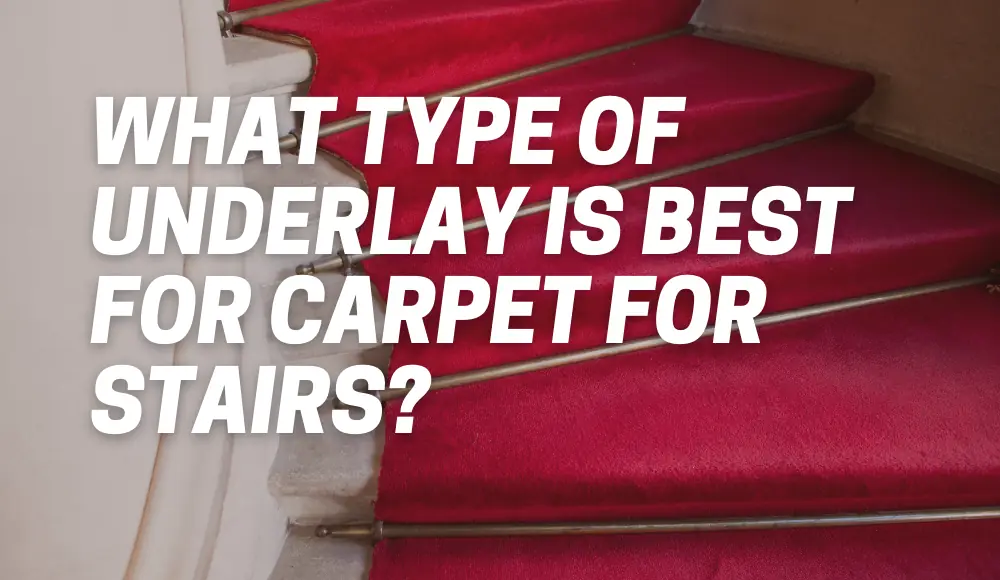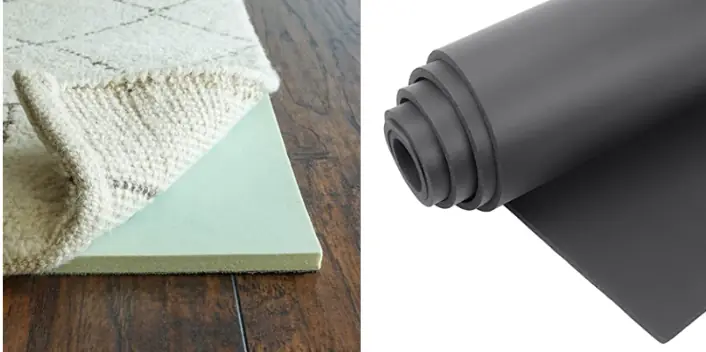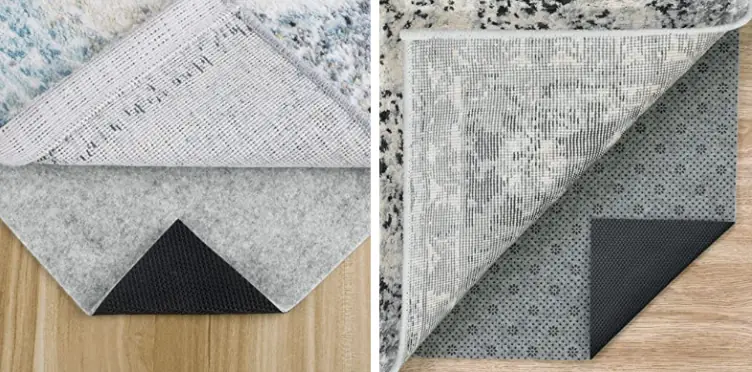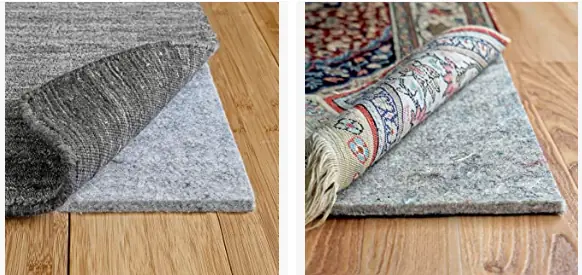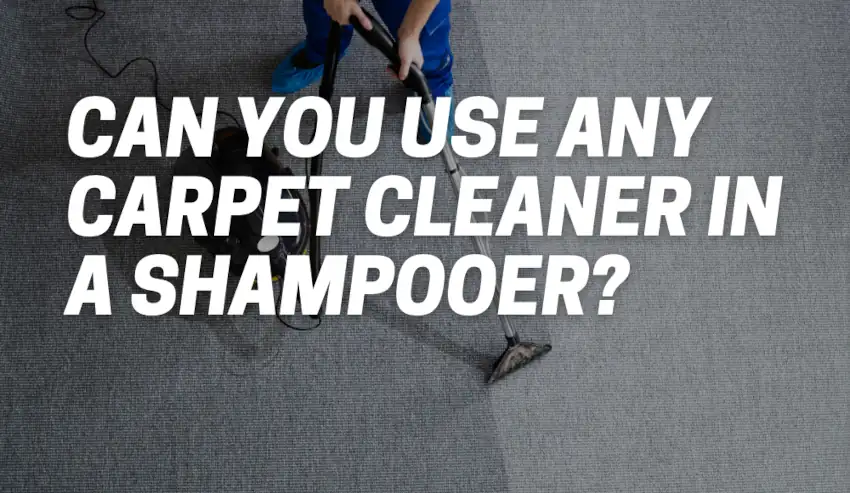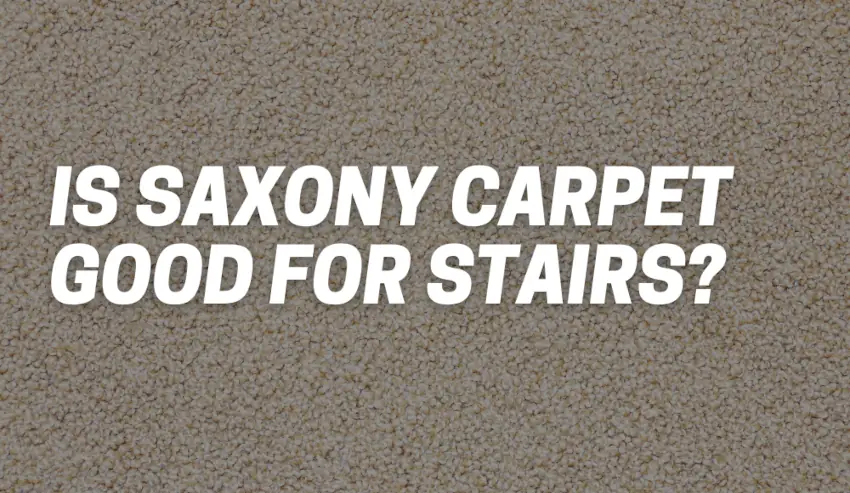If you’re considering installing a carpet on your stairs, one crucial element to consider is the underlay. The right underlay can make a significant difference in the overall comfort, durability, and soundproofing of your carpeted stairs. In this article, we’ll delve into the world of underlay for stair runners, discussing what type of underlay is best for carpet for stairs, its importance, the different types available, and which ones are best suited for your needs.
What is Carpet Underlay for Stairs?
First things first.
Carpet underlay for stairs is a layer of material that is placed between the staircase and the carpet itself.
Its primary purpose is to provide additional support and cushioning, enhancing the feel and longevity of your carpeted stairs. Underlay also acts as a sound barrier, minimizing noise transmission between the stairs and the rest of the house.
It helps reduce wear and tear on the carpet, making it a wise investment in the long run.
Do You Need Underlay for Carpet on Stairs?
Does a stair runner carpet need underlay at all?
Absolutely! Underlay for carpet on stairs is not just an optional add-on; it’s a necessity.
Without underlay, your carpet would be in direct contact with the hard surface of the stairs, leading to quicker wear and tear.
Additionally, the absence of underlay can result in a noisier environment, as the footsteps and movements on the stairs would resonate throughout the house.
Do You Need Different Underlay for Stairs?
When it comes to underlay, one size does not fit all.
Stairs have a unique structure and experience more foot traffic compared to other areas of your home.
Therefore, it’s essential to choose an underlay specifically designed for stairs. These specialized underlays are often denser and more resilient, providing better support and durability.
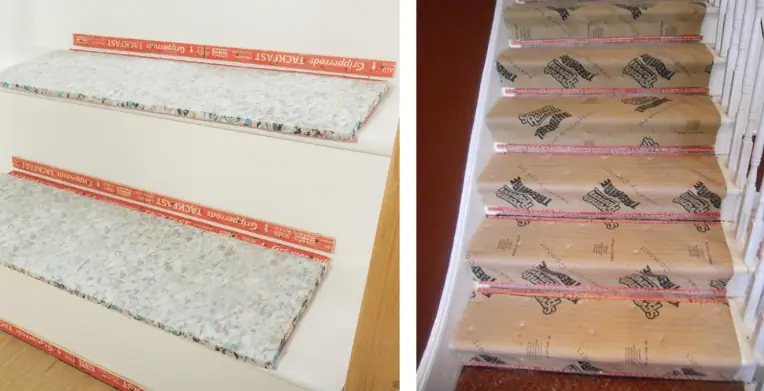
What Type of Carpet Padding is Best for Stairs?
Now that we understand the importance of underlay for stair runners, let’s explore the different types available and determine the best option for your stairs.
1. Foam Underlay
Foam underlay is a popular choice for stairs due to its versatility and affordability. It provides excellent cushioning and is available in various densities.
A higher density foam underlay will offer better support and longevity, making it ideal for stairs that experience heavy foot traffic.
2. Rubber Underlay
Rubber underlay is another fantastic option for stairs. It offers exceptional soundproofing properties and is highly resilient, making it ideal for reducing noise transmission and ensuring long-lasting performance. Rubber underlay also provides added insulation, making it an excellent choice for colder climates.
3. Felt Underlay
Felt underlay is a more traditional choice and is known for its comfort and luxurious feel. It provides a plush surface and excellent thermal insulation. However, felt underlay may not be as durable as foam or rubber options, so it’s important to consider the level of foot traffic your stairs will experience.
What Density Underlay Should I Use on Stairs?
When it comes to density, it’s crucial to strike a balance.
Too soft of an underlay may lead to premature wear and compression, while an excessively firm one may not provide sufficient comfort.
As a general guideline, aim for a density between 8 to 10 pounds per cubic foot for optimal performance on stairs.
Is 10mm underlay too thick for stairs?
When considering the carpet underlay thickness for stairs, it’s important to find a balance between comfort and practicality. While a 10mm underlay can provide excellent cushioning and comfort, it may be too thick for stairs in some cases.
One of the main factors to consider is the height and depth of the stairs. If the underlay is too thick, it may cause the carpet to sit too high, potentially creating a tripping hazard.
Additionally, thicker underlay can make the carpet less stable, leading to potential issues with installation and maintenance.
In most cases, a 10mm underlay is considered on the thicker side for stairs.
It’s typically recommended to use underlay with a thickness under 9mm carpet underlay or between 6mm and 8mm for stairs, as this provides sufficient cushioning while still maintaining stability and safety.
However, it’s important to note that the specific requirements may vary based on the carpet type, the construction of the stairs, and personal preference.
If you’re unsure about the appropriate thickness of underlay for your stairs, it’s advisable to consult with a professional carpet installer who can assess the specific characteristics of your staircase and provide tailored recommendations.
Remember, safety should always be a top priority when choosing underlay for stairs.
Carpet Underlay Prices
Carpet underlay prices can vary depending on the type, quality, and brand you choose.
Foam underlay is often the most affordable option, with prices ranging from $1 to $3 per square foot. Rubber underlay tends to be slightly more expensive, typically ranging from $2 to $5 per square foot. Felt underlay falls within a similar price range to rubber underlay.
Best Carpet Underlay for Stairs
Now that we’ve explored different types of underlay, their characteristics, and pricing, you may be wondering which one is the best carpet underlay for stairs.
Ultimately, the answer depends on your specific needs and preferences.
If you’re looking for a balance between affordability and performance, foam underlay is a reliable choice. For superior soundproofing and resilience, rubber underlay is a great option.
And if you prioritize luxurious comfort and insulation, felt underlay may be the way to go.
To summarize, when choosing the best underlay for your stair runner, consider factors such as durability, cushioning, soundproofing, and price. Take into account the level of foot traffic your stairs will experience and the overall atmosphere you want to create.
Installation Tips for Underlays on Carpeted Stairs
Preparing the Surface Area
Before installing any underlay on carpeted stairs, it is important to properly prepare the surface area. Start by thoroughly cleaning the stairs to remove any dirt, debris, or dust.
This will ensure that the underlay adheres properly and prevents any damage or movement of the carpeting. If there are any visible damages or cracks in the stair surface, fill them in with a patching compound before installing the underlay.
Ensuring That The Surface Is Level
It’s essential to ensure that your staircase is level before installing an underlay. A level surface will help prevent premature wear and tear of your carpet, as well as provide an even walking surface with no bumps.
Use a long-level tool to check if there are high spots or low spots on each step. If you find unevenness in certain areas, use a patching compound to fix it before adding underlay.
FAQs
Is there an alternative to carpet underlay?
If you’re seeking an alternative to carpet underlay, one option is using a high-quality carpet with built-in cushioning or padding.
These carpets are specifically designed to provide comfort and support without the need for additional underlay.
However, keep in mind that this option may be more expensive compared to using traditional underlay materials.
Conclusion
When it comes to installing a carpet on your stairs, don’t overlook the importance of choosing the right underlay. It can significantly enhance the comfort, durability, and soundproofing of your carpeted stairs, ensuring a pleasant and enjoyable experience for years to come.
Whether you opt for foam, rubber, or felt underlay, make an informed decision based on your unique needs and preferences. With the right underlay, your stairs will not only look beautiful but also feel luxurious and inviting.
